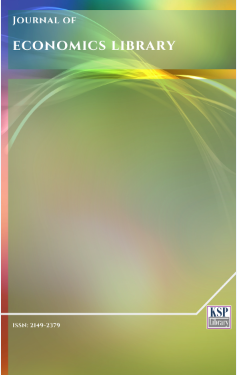Dynamics in Educational Outcomes by Gender: Evidence from Pakistan
Abstract
Abstract. There is strong empirical evidence that show females as a marginalized group in many aspect within Pakistan with its education sector being no different. However it is extremely important not only to document this fact but to analyze how such tendencies are evolving over time within society. This paper is an attempt in this direction, whereby in our analysis not only we assess how different are female and male population in terms of their current enrollment and attained education patterns but also in terms of structure of change in their attainment distribution as we move from older towards younger cohorts. Our findings show though gender should remain an important policy concern in domain of education sector given the prominent discrepancies in current enrolment and attained schooling estimates within male and female population, however distributional analysis of attainment patterns over age cohorts show that there is definitely some evidence of structural shifts in terms of changing economic constraints and social norms within Pakistan. This can be inferred from evidence that show much stronger inclination of higher education in younger cohorts within female attainment distribution.
Keywords. Educational attainment, Gender, Age cohort analysis, Pakistan.
JEL. I21, J16.
Keywords
References
Ali, K. (2003). Gender exploitation: from structural adjustment policies to poverty reduction strategies, Pakistan Development Review, 42(4), 669-694.
Ghuman, S., & Lloyd, C.B. (2010). Teacher absence as a factor in gender inequalities in access to primary schooling in rural Pakistan, Comparative Education Review, 54(4), 539-554.
Holmes, J. (2003). Measuring the determinants of school completion in Pakistan: Analysis of censoring and selection bias, Economics of Education Review, 22, 249-264.
Lloyd, C.B. (2004). The changing transitions to adulthood in comparative perspective: The case of Pakistan, Pakistan Development Review, 43(4), 441-463.
Mahmood, N. (2004). Transition in primary and secondary schooling in Pakistan: Gender and age Cohort analysis, Pakistan Development Review, 43(1), 53-71.
Qureshi, M.G. (2012). The gender difference in school enrollment and returns to education in Pakistan, Pakistan Development Review, 51(3), 219-256.
Sabir, M. (2002). Gender and public spending on education in Pakistan: A case study of disaggregated benefit incidence. Pakistan Development Review, 41(4), 477-493.
Saqib, N.U. (2004). Willingness to pay for primary education in rural Pakistan, Pakistan Development Review, 43(1), 27-51.
Sathar, Z. & Lloyd, C.B. (1994). Who gets primary schooling in Pakistan: Inequalities among and within families, Pakistan Development Review, 33(2), 103-134.
DOI: http://dx.doi.org/10.1453/jel.v4i2.1276
Refbacks
- There are currently no refbacks.
.......................................................................................................................................................................................................................................................................................................................................
Journal of Economics Library - J. Econ. Lib. - JEL - www.kspjournals.org
ISSN: 2149-2379
Editor: [email protected] Secretarial: [email protected] Istanbul - Turkey.
Copyright © KSP Library

